Baseball nerds are looking at all kinds of statistics that weren’t listed on the back of a baseball card when we were growing up. With the newer FIP, BABIP, and WAR statistics that have become a part of analysis of player abilities, it seems to be easier to project rebound candidates, potential breakouts, or potential flops based on these newer, sabermetric-based statistics. After looking at pitchers, lets take at look at some hitters:
BABIP Winners and Losers for 2013
Batting Average on Balls In Play (BABIP) is an interesting statistic. FanGraphs.com has some really useful information on BABIP in their glossary and Tristan H. Cockcroft (awesome name, bro) had an interesting piece on how to use BABIP when putting your fantasy team together. Both discuss variables in how the statistic can be flawed, as Fangraphs focused on defense, luck, and talent level, while Cockcroft focused on “raw hitting skills, raw pitching skills, type of contact, and quality of contact.”
Regardless of those variables, the fact remains that, as Cockcroft says, the league average in 2012 was .297, while Fangraphs goes further, stating:
The average BABIP for hitters is around .290 to .310. If you see any player that deviates from this average to an extreme, they’re likely due for regression.
However, hitters can influence their BABIPs to some extent. For example, speedy hitters typically have high career BABIP rates (like Ichiro and his .357 career BABIP), so don’t expect all players to regress to league average.
For the purpose of this piece, however, the extreme deviations from normal are taken into consideration.
Hitters to Target
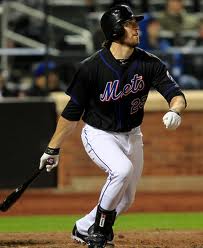
Ike Davis, 1B, New York Mets: If you search this site, you’ll see that I have a bit of a man crush on Davis. In 2012, Davis managed to hit .227/3.08/.462 with 32 home runs and 90 RBI, all while posting a BABIP of just .246. The .271/.369/.460 line, 26 home runs, and 41 doubles over his first 750 plate appearances shows that Davis is quite capable of becoming an offensive force. The regression in batting average can be related to the Valley Fever that sapped his energy in spring training of last season, but with an increase in BABIP, Davis could become a .270 hitter with 35-40 home runs, even while playing half of his games at Citi Field for the Mets. Davis will turn 26 in late March and is well on his way to a huge rebound or breakout in 2013.
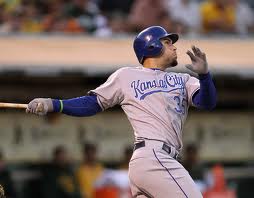 Eric Hosmer, 1B, Kansas City Royals: Sophomore slump…yeah right. Hosmer hit .232/.304/.359 with 14 home runs in 2012, while posting a .255 BABIP. He increased his walk rate from 6 percent in his rookies season to 9.4 percent last year, while maintaining a line drive percent (18.7 percent in 2011, 18.5 percent in 2012). It just seems like the ground ball percentage, which jumped from 49.7 to 53.6 percent, played a role in his huge decrease in BABIP, which was at .314 in 2011. Hosmer will play the entire 2013 season at the age of 23. With great plate discipline and tremendous athleticism, he is a tremendous name to grab in hopes of a potential All-Star campaign. His early spring results (.391/.462/.696) could be an indication of such a breakout, as Hosmer heads off to take Mark Teixiera’s place on Team USA in the World Baseball Classic.
Eric Hosmer, 1B, Kansas City Royals: Sophomore slump…yeah right. Hosmer hit .232/.304/.359 with 14 home runs in 2012, while posting a .255 BABIP. He increased his walk rate from 6 percent in his rookies season to 9.4 percent last year, while maintaining a line drive percent (18.7 percent in 2011, 18.5 percent in 2012). It just seems like the ground ball percentage, which jumped from 49.7 to 53.6 percent, played a role in his huge decrease in BABIP, which was at .314 in 2011. Hosmer will play the entire 2013 season at the age of 23. With great plate discipline and tremendous athleticism, he is a tremendous name to grab in hopes of a potential All-Star campaign. His early spring results (.391/.462/.696) could be an indication of such a breakout, as Hosmer heads off to take Mark Teixiera’s place on Team USA in the World Baseball Classic.
Jemile Weeks, 2B, Oakland Athletics: Weeks is an interesting player, having thrived in 2011, much like Hosmer, posting a .303/.340/.421 line, before crashing to a .221/.305/.304 line last season. Weeks has tremendous speed, but he has been thrown out stealing 16 times in 54 attempts, a 70 percent success rate, which has been about the norm throughout his career, as he was 41 for 55 (74 percent) in the minors. Weeks had nine infield hits in 2011 but just eight in 2012 in 74 more plate appearances, while his BABIP fell from .350 in 2011 to .256 last season. With a drastic increase in his walk rate (from 4.8 percent in 2011 to 9.8 percent in 2012) and the potential for a rebound in his BABIP to even .290, Weeks would see a solid increase in overall production. However, the Athletics have reloaded their roster, trading for Jed Lowrie, signing Japanese shortstop Hiroyuki Nakajima, while welcoming back Scott Sizemore from injury. With so many options, Weeks needs to start quickly. If he can find a way to use the speed that he has with the ability to utilize slap the ball all over the field, as he did in 2011, Weeks will be valuable to the A’s and fantasy baseball owners.
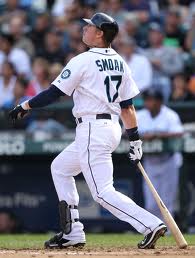 Justin Smoak, 1B, Seattle Mariners: Stop me if you’ve heard this before, but…this is the year that Justin Smoak breaks out!!! Smoak may be one of the most unlucky hitters in baseball, as his career BABIP is just .256. A career line of .223/.306/.377 in 1,421 plate appearances could say that Smoak is what he is…bad. However, over the last month of the season, Smoak hit .341/.426/.580 with five home runs, 11 RBI, and a 13:13 K:BB in 101 plate appearances. This spring, Smoak is hitting .500/.556/1.000 with two home runs in his first 16 at-bats. After posting another low BABIP in 2012, .242, while seeing his walk and strikeout rates hold to around his career norms. Smoak needs to stay hot after the Mariners added Michael Morse, Raul Ibanez, and Kendrys Morales to the club this winter, each of whom could slide into a DH/1B/LF role, which would limit Smoak’s playing time.
Justin Smoak, 1B, Seattle Mariners: Stop me if you’ve heard this before, but…this is the year that Justin Smoak breaks out!!! Smoak may be one of the most unlucky hitters in baseball, as his career BABIP is just .256. A career line of .223/.306/.377 in 1,421 plate appearances could say that Smoak is what he is…bad. However, over the last month of the season, Smoak hit .341/.426/.580 with five home runs, 11 RBI, and a 13:13 K:BB in 101 plate appearances. This spring, Smoak is hitting .500/.556/1.000 with two home runs in his first 16 at-bats. After posting another low BABIP in 2012, .242, while seeing his walk and strikeout rates hold to around his career norms. Smoak needs to stay hot after the Mariners added Michael Morse, Raul Ibanez, and Kendrys Morales to the club this winter, each of whom could slide into a DH/1B/LF role, which would limit Smoak’s playing time.
Hitters to Avoid
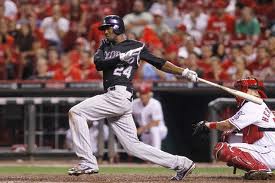 Dexter Fowler, OF, Colorado Rockies: Fowler turns 27 in late March, the magic number for a prime breakout. In 2012, Fowler posted an absurd .390 BABIP, while compiling a .300/.389/.474 line, 18 doubles, 11 triples, 13 home runs, and 12 stolen bases, the definition of a box score filler. He has always had solid plate discipline, as his 12.8 percent walk rate and .364 career on-base percentage show, so is he for real? Maybe this is just who he is, as he posted a .351 BABIP in 2009, .328 in 2010, and .354 in 2011 before the jump to .390 last season; however, .390 is so unrealistic and “lucky”, isn’t it? Even if Fowler manages to maintain his career .353 BABIP, he’ll see a slight decline in his overall numbers. I’m a big fan of Fowler’s, but expecting him to duplicate his BABIP is unreasonable, though he could add enough power with his on-base skills to be very useful for the Rockies and fantasy geeks alike.
Dexter Fowler, OF, Colorado Rockies: Fowler turns 27 in late March, the magic number for a prime breakout. In 2012, Fowler posted an absurd .390 BABIP, while compiling a .300/.389/.474 line, 18 doubles, 11 triples, 13 home runs, and 12 stolen bases, the definition of a box score filler. He has always had solid plate discipline, as his 12.8 percent walk rate and .364 career on-base percentage show, so is he for real? Maybe this is just who he is, as he posted a .351 BABIP in 2009, .328 in 2010, and .354 in 2011 before the jump to .390 last season; however, .390 is so unrealistic and “lucky”, isn’t it? Even if Fowler manages to maintain his career .353 BABIP, he’ll see a slight decline in his overall numbers. I’m a big fan of Fowler’s, but expecting him to duplicate his BABIP is unreasonable, though he could add enough power with his on-base skills to be very useful for the Rockies and fantasy geeks alike.
Austin Jackson, OF, Detroit Tigers: Jackson is the poster boy for inflated BABIP and what they can do with inflation and deflation. Check out these statistics:
| Year | Tm | AB | R | H | 2B | 3B | HR | RBI | SB | BB | SO | ||||
|---|---|---|---|---|---|---|---|---|---|---|---|---|---|---|---|
| 2010 | DET | 618 | 103 | 181 | 34 | 10 | 4 | 41 | 27 | 47 | 170 | .293 | .345 | .400 | .745 |
| 2011 | DET | 591 | 90 | 147 | 22 | 11 | 10 | 45 | 22 | 56 | 181 | .249 | .317 | .374 | .690 |
| 2012 | DET | 543 | 103 | 163 | 29 | 10 | 16 | 66 | 12 | 67 | 134 | .300 | .377 | .479 | .856 |
| 3 Yrs | 1752 | 296 | 491 | 85 | 31 | 30 | 152 | 61 | 170 | 485 | .280 | .346 | .416 | .761 | |
| 162 Game Avg. | 644 | 109 | 180 | 31 | 11 | 11 | 56 | 22 | 62 | 178 | .280 | .346 | .416 | .761 | |
In 2010, Jackson’s BABIP was: .396
In 2011, Jackson’s BABIP was: .340
In 2012, Jackson’s BABIP was .371
While Jackson has a career BABIP of .370, if he reverts to his undisciplined, free swinging ways of 2010 and 2011 (when he had strikeout rates of 25.2 and 27.1 percent), he could see a large decline in his overall numbers, similar to the drop-off in 2011. However, with his gains in power (career-high 16 home runs) and his walk rate (10.8 percent), he, too, will still have some value, especially hitting in front of Prince Fielder and Miguel Cabrera.
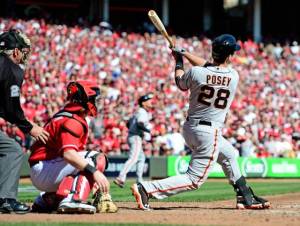 Buster Posey, C, San Francisco Giants: Posey was the NL MVP, and with good reason, posting a .336/.408/.549 line in 2012. The only issue could be that batting average, which could have seen a huge bump from Posey’s .368 BABIP. Previously, he had posted BABIPs of .315 in 2010 and .326 in 2011. While Posey does have some speed, will he be a catcher capable of 17 infield hits every season? While he is a very special talent, Posey may not repeat his incredible 2012 totals, especially if Brandon Belt solidifies himself as an everyday first baseman. Will they sit Belt if he is having a breakout season so that Posey can take a day off behind the plate? Posey is still the top catcher available in fantasy leagues and the top offensive catcher in baseball, with the ability to post numbers that only Matt Wieters, Salvador Perez, or Carlos Santana seem capable of reaching, but can he continue to post an extremely high BABIP going forward? For that reason alone, be cautious in putting too much stock into the superstar catcher.
Buster Posey, C, San Francisco Giants: Posey was the NL MVP, and with good reason, posting a .336/.408/.549 line in 2012. The only issue could be that batting average, which could have seen a huge bump from Posey’s .368 BABIP. Previously, he had posted BABIPs of .315 in 2010 and .326 in 2011. While Posey does have some speed, will he be a catcher capable of 17 infield hits every season? While he is a very special talent, Posey may not repeat his incredible 2012 totals, especially if Brandon Belt solidifies himself as an everyday first baseman. Will they sit Belt if he is having a breakout season so that Posey can take a day off behind the plate? Posey is still the top catcher available in fantasy leagues and the top offensive catcher in baseball, with the ability to post numbers that only Matt Wieters, Salvador Perez, or Carlos Santana seem capable of reaching, but can he continue to post an extremely high BABIP going forward? For that reason alone, be cautious in putting too much stock into the superstar catcher.
Related articles
- 2013 Nerdy Baseball Stat Projections: Pitchers (thebaseballhaven.mlblogs.com)
- 2013 Breakout Candidates (thebaseballhaven.mlblogs.com)
- What If Mike Trout Stumbles? (thebaseballhaven.mlblogs.com)

Fowler might still be worth the risk where he is going in drafts (way past the 150th pick). They only reason I can think of Jackson having a higher ADP is because he’s in that tigers lineup.
LikeLike